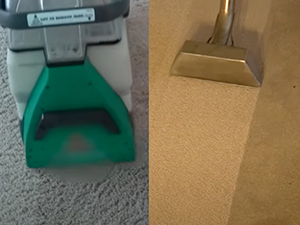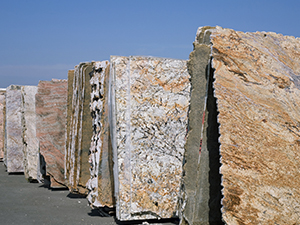Can Skin Soap Damage Natural Stone?
If you have marble or other natural stone shower walls or tub surrounds, the skin soap you use can damage, stain, or diminish the appearance of your stone, especially if your stone is porous or calcium-based. With an abundance of skin cleaning products on the market, from bars and scrubs to foams and gels, knowing which ones to avoid using around your natural stone can be tricky. This article provides the details you need.
The Safest Soaps Are pH Neutral
The pH scale is a range of 0 to 14 to describe how acidic or basic, or alkaline a substance is. When something is pH-neutral, it is 7 on the pH scale. Soaps that are less than 7 are acidic. Soaps that are greater than 7 are alkaline. The safest soaps for both human skin and natural stone are pH-neutral, and do not contain detergents (synthetic cleaners), surfactants (surface active agents), dyes, fragrances, sulfates, and other additives.
What is soap, anyhow? According to the U.S. Food and Drug Administration,
Ordinary soap is made by combining fats or oils and an alkali, such as lye. The fats and oils, which may be from animal, vegetable, or mineral sources, are degraded into free fatty acids, which then combine with the alkali to form crude soap. The lye reacts with the oils, turning what starts out as liquid into blocks of soap. When made properly, no lye remains in the finished product.
The easiest way to determine whether your skin soap is ordinary, pH-neutral soap is to purchase skin soap specifically marked on the label as pH-neutral. You may also purchase a digital pH meter or litmus paper to test soap.
Acidic Soaps Can Cause Etch Damage
One of the most widely recognized acid etch marks is what many people refer to as “water marks” on a kitchen countertop, because when acidic drink spills go unnoticed a little too long, the etch damage left behind can have the same circular shape as that of condensation left behind from a glass. Acidic soaps used for cleaning your skin can cause the same type of damage in the shower as in the kitchen.
Acids in skin soap chemically react with calcite or other minerals in the stone that are sensitive to acid, causing a white discoloration and roughening the surface of the stone. This damage cannot be wiped or washed away using regular cleaning methods. Your professional stone restoration technician may attempt to remove very mild etching with a polishing powder. Deep etch removal, however, will require honing and polishing.
Basic (Alkaline) Soaps Can Cause Etch Damage
One of the most widely recognized alkaline etch marks is a white spot on glass after going through a dishwasher with an inadequate rinse cycle. Similarly, regular use of soaps with a high alkaline content can etch the finish of your natural stone.
Alkaline etch damage cannot simply be wiped or cleaned away. Your professional stone restoration technician may attempt to remove alkaline etch damage with a mild acid, but since acid can also cause etch damage, chances are your stone will need to be honed and polished.
Soap Dyes or Fats Can Stain or Discolor Natural Stone
Some soaps contain dyes or colorants to give the product a more attractive appearance. If stone is porous, it can absorb dyes, especially blue, green, or turquoise dyes, causing the surface to darken or become discolored.
Some soaps are made from a high fat source, like coconut oil. An abundance of this ingredient can, over the course of time, act like a natural color-enhancing or darkening agent.
If a small area of your stone is stained, poulticing can draw the discoloration out of the stone. Visit our Stain Management App under the Resources tab for poultice ingredients and instructions, including a how-to video. If discolorations or stains persist or if they cover a large area, your professional stone restoration technician may be able to use a combination of honing, polishing, sealing, and enhancing to mask or diminish the problem to your satisfaction.
Soap Scum Can Diminish the Appearance of Stone
When minerals in your water interact with soap residues and surfactants, a thin film of soap scum can form on your stone. The best way to prevent this is to keep the shower clean. Use a squeegee to wipe your stone down after a shower, and clean your stone once per week with stone-safe, neutral cleaner.
Feel free to contact us regarding any specific questions or concerns you may have about your soap and your stone. To protect the finish of your natural stone shower walls or tub surrounds purchase soap that is safe for natural stone. Your skin may thank you, as well.
This article is one of a series of articles written and published on behalf of Surface Care PROS Partners.










